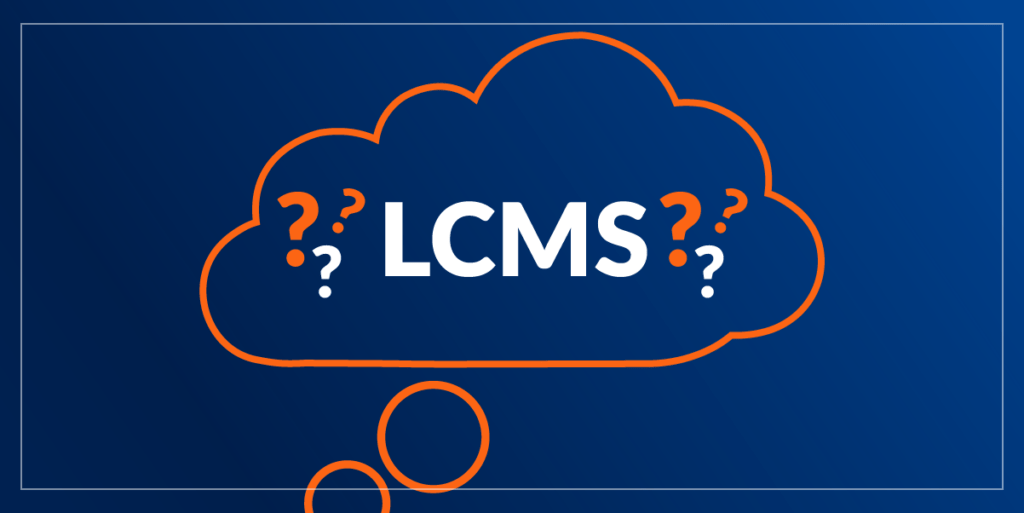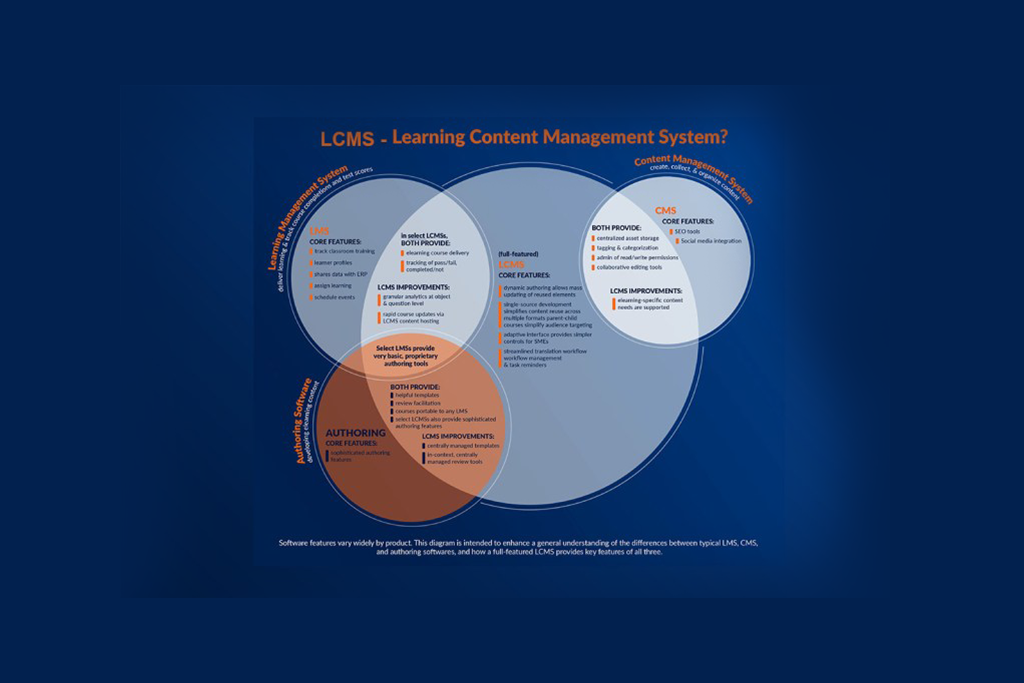As the name suggests, Learning Content Management System manages eLearning content including online courses, assessments, and other digital materials. An LCMS should not be confused with a Learning Management System (LMS) which is a software application used for delivering eLearning courses and resources, managing learning processes, learners, and performing learning administrative tasks.
In general, a Learning Content Management System (LCMS) refers to a cloud-based web application or software that enables a team of subject matter experts, instructional designers, and eLearning authors to collaborate and develop eLearning content.
Technically, it is a platform that integrates authoring, and publishing, in a multi-user environment.
Instead of developing entire courses and adapting them to multiple audiences, an LCMS facilitates content authors to create reusable content chunks, assemble them into eLearning courses or learning paths, and make them available to learners or user groups throughout the organization. This allows for the rapid assembly of customized content and eliminates duplicate development efforts.

WHAT ARE THE BENEFITS OF A LEARNING CONTENT MANAGEMENT SYSTEM?
An LCMS provides many benefits:
1. IMPROVES PRODUCTIVE COLLABORATION AMONGST CONTENT DEVELOPMENT TEAM:
LCMS enables your content development team to efficiently and consistently share content assets to create new course content and digital learning resources. It provides a central hub where staff members can work on eLearning content together.
2. INTELLIGENT AUTOMATION:
LCMS can be used to create intelligent content templates and themes that can be auto-populated with instructional content with interactions and multimedia resources. Create branded eLearning content minutes with reusable templates.
3. INCREASED PERSONALIZATION:
Thanks to the use of automation technology, an LCMS can be used to curate learning content that is personalized to the needs of each individual student. Based on the learner profile and prior knowledge the content sequence can be adapter to a learner’s needs on the fly.
4. MORE EFFICIENT COURSE MANAGEMENT:
Since an LCMS makes it much easier to build quality learning content and present valuable resources, the whole course management process can become so much more efficient. Instructional designers, eLearning authors, and instructors and support staff can significantly reduce the amount of time they need to spend putting together learning content, enabling them to focus more on working directly with learners.
5. REDUCED ELEARNING CONTENT DEVELOPMENT COSTS:
The time saved in using a learning content management system to build new course content can translate into lower course development costs. An LCMS that makes this process easier, allows training organization diverts resources into developing new courses, modules, and other learning resources.
WHAT ARE THE KEY FEATURES OF A LEARNING CONTENT MANAGEMENT SYSTEM?
The main function of an LCMS is to help create and manage content for online learning platforms and digital learning resources and its many benefits include:
1. MULTI-FORMAT PUBLISHING:
LCMS supports content creators to publish content from one source and export it in many ways — Microsoft Word, PDF, SCORM eLearning, Cmi5, Microsoft PowerPoint, and more. With this platform, teams can develop once, and avoid spending a lot of time recreating the same content for different outputs.
2. RAPID AUTHORING AND REUSABILITY:
Because an LMCS has a centralized content library, it enables authors to curate and assemble bite-size pieces of content into a variety of courses, lessons, and more. This in turn facilitates rapid assembly of content, and the ability to re-purpose content for a variety of different outputs, without starting from scratch.
3. LOCALIZE THE CONTENT:
Localize the content so you can deliver it to a global audience in multiple languages and enable learners to view content based on their preferences. Within a single piece of content imbed multiple language variations of an eLearning course without needing to maintain a different version of the same course.
4. A SINGLE-SOURCE, CENTRALIZED CONTENT REPOSITORY:
Unlike other tools, an LCMS platform allows authors to create, store, and search libraries of content all in one location. Using a single source, you can generate content in multiple formats such as web, mobile, print.
5. LEARNING INTERACTIONS AND ASSESSMENTS:
A robust LCMS consists of a built-in library of the most common interaction types, including question templates such as drag and drop, fill in the blank, image maps, interactive tabs, matching, multiple-choice, sequencing, and more.
CONCLUSION
An LCMS can be an integral part of your learning technologies stack or can step up to the plate and be your single system for content creation and delivery.
With built-in authoring tools integrated right into the LCMS, you can create the primary interactive eLearning content consumed by learners and supplementary digital resources (used within one or more online courses) to better engage with your learners, while ensuring that your content plays on any device from any location.
In addition to helping you create new content, the LCMS enables you to upload and manage external content files or packages and combine them with content created within the LCMS to build your blended learning programs.
Every content object in the LCMS may also be tagged with meta-data information such as a title and keywords to help users easily find the content. Within the LCMS, Authors may submit their content for review, and then use feedback comments from reviewers to improve the content.
This blog is originally published on eLearning Carnival on November 9, 2020




